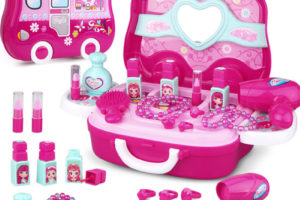Enjoying fiddleheads this season? Here’s how to clean, cook and prepare them safely so your family can get the most out of this springtime delicacy.
If you’ve ever wandered through a farmer’s market in early spring, you’ve likely spotted these tightly coiled ferns set out in a basket amongst the carrots and spring onions. Officially called ostrich fern fronds, fiddleheads fall into a similar flavour category to artichokes or asparagus. Rich in fibre, they’re also an excellent source of omega-3 fatty acids, as well as vitamins A and C. If you’re not sure how to cook fiddleheads, you’ve landed in the right spot—especially because there is a safety issue at hand.
While fiddleheads are certainly pretty, they can pose a risk to your health if they’re not properly cooked and cleaned. According to Health Canada, thousands of Canadians get food poisoning each year from fiddleheads that have not been stored, prepared or cooked properly.
Here are a few tips for safely enjoying fiddleheads with your family this season.
Clean fiddleheads thoroughly
Individually clean fiddleheads by using your fingers to remove any visible brown husk. Use multiple changes of fresh, cold water to wash away any residual dirt.
Cook them fully before using them in a recipe
Once your fiddleheads have been cleaned, fill a pot with a generous amount of water and bring it to a boil. Cook fiddleheads in boiling water for approximately 15 minutes. If you prefer to steam the fiddleheads, do so for 10 to 12 minutes to ensure they are fully cooked. Discard any leftover water.
It’s essential that you fully cook fiddleheads prior to using them in a recipe, even if you plan to further sauté, fry or bake them.
Freezing fiddleheads
If you plan to freeze your fiddleheads for later use (which isn’t a bad idea considering how briefly they are in season), be sure to first clean them, boil them in water for at least two minutes and then plunge them into ice water before packing them into an airtight container. Fiddleheads can be frozen for up to a year and must be fully cooked after thawing.
What to make with fiddleheads
Now that the tasty morsels are cooked, what should you make with them? Give the kids a break from asparagus and substitute fiddleheads in these Herbed Crepes with Chicken, Asparagus and Mushrooms or this Farfalle with Roast Chicken, Spring Veggies and Parmesan. Yum!

































